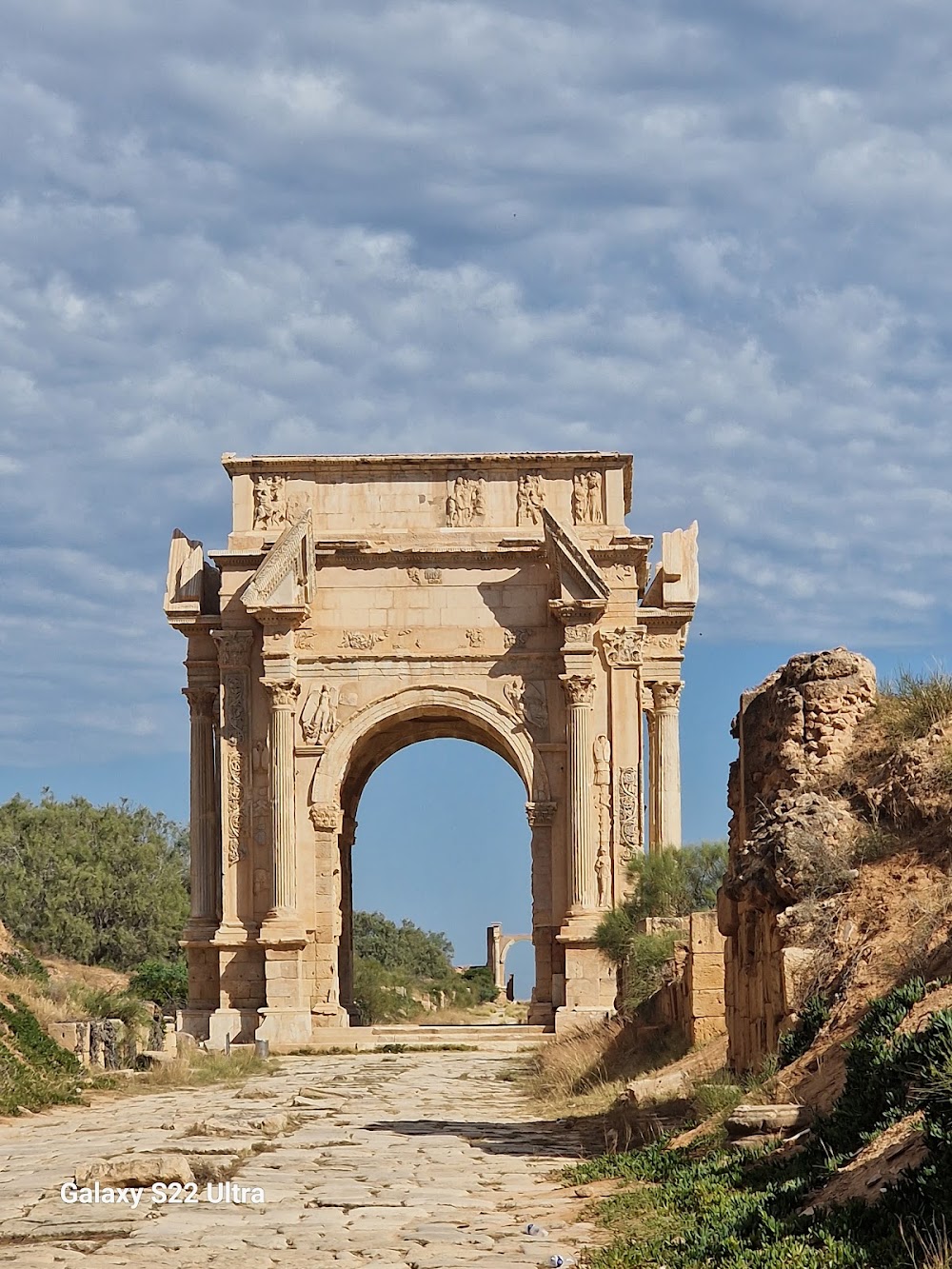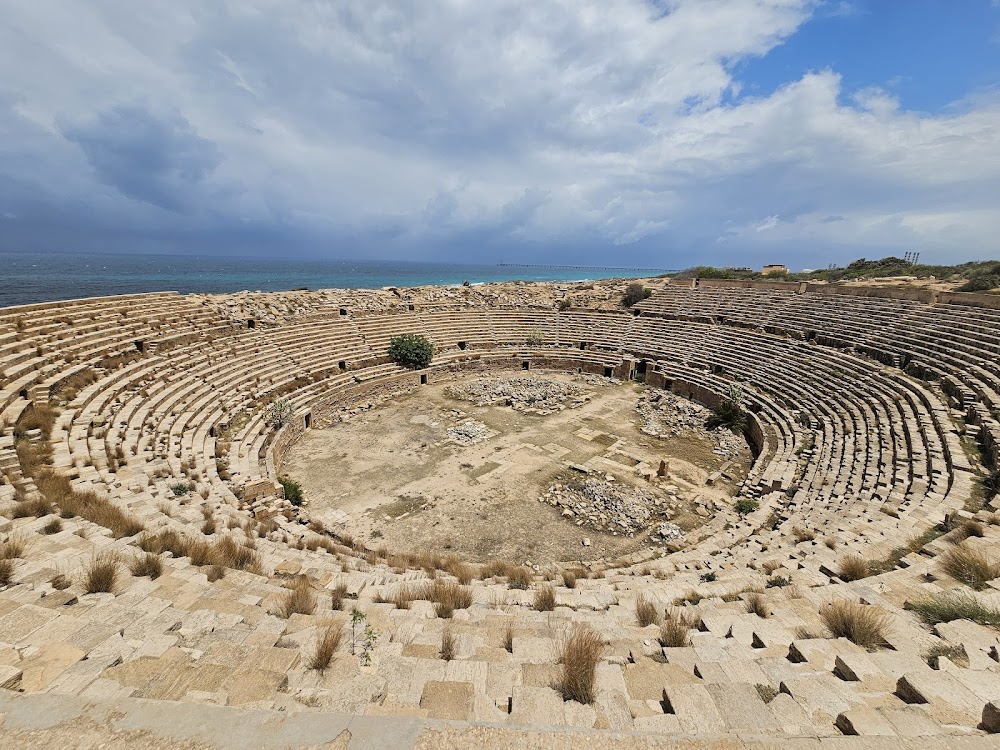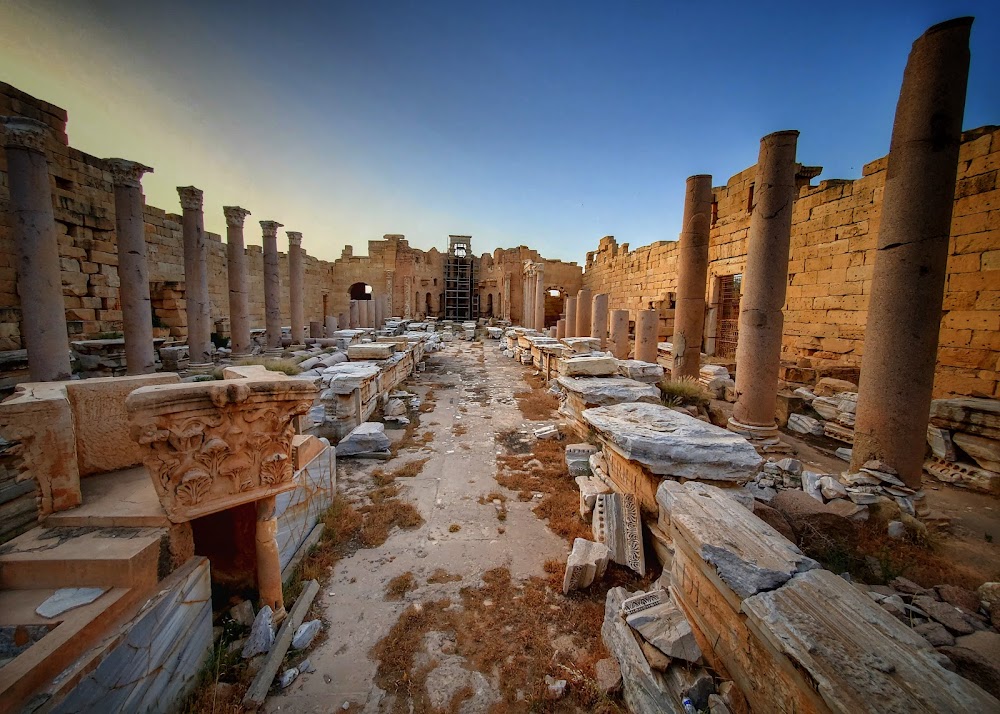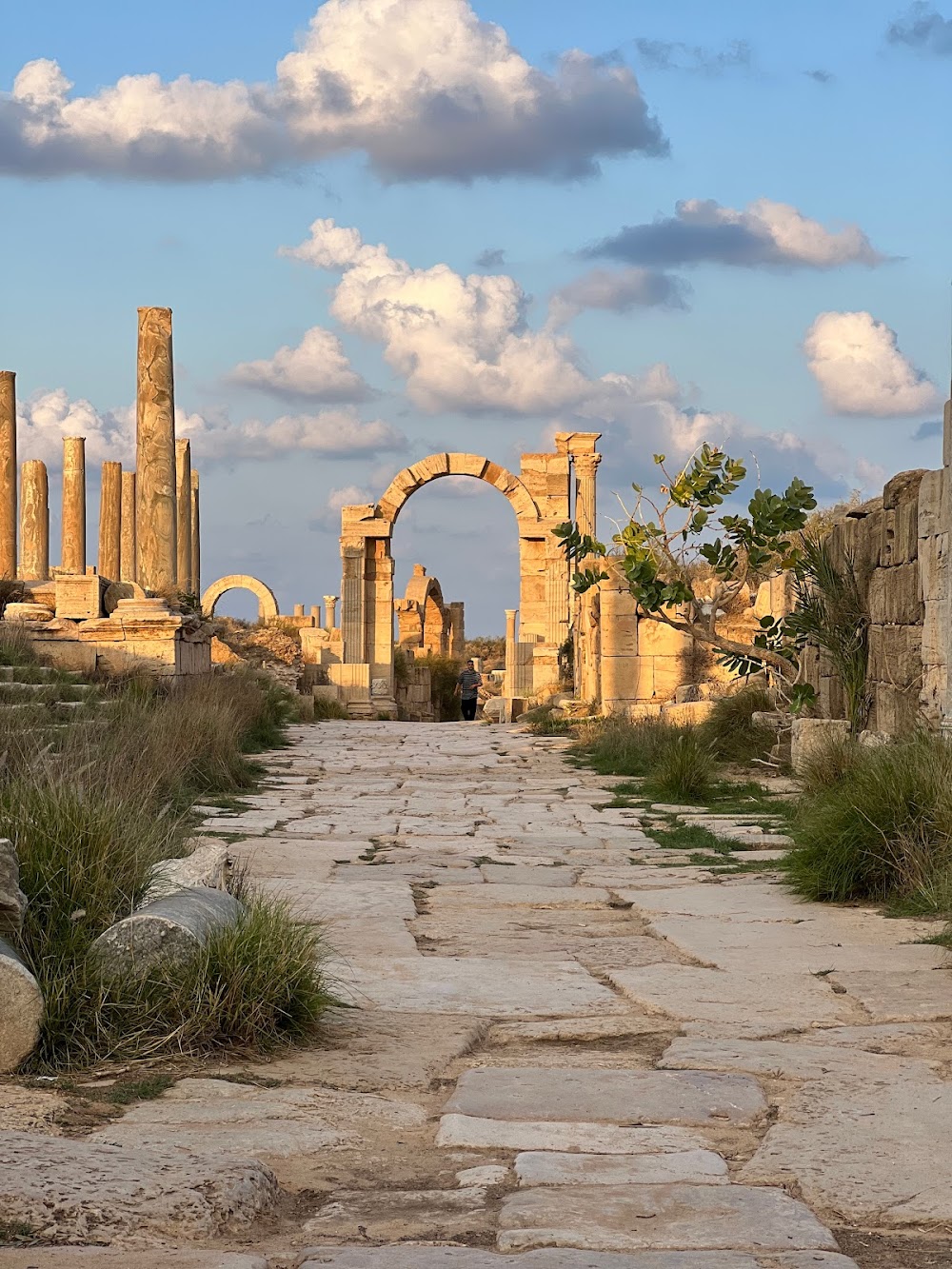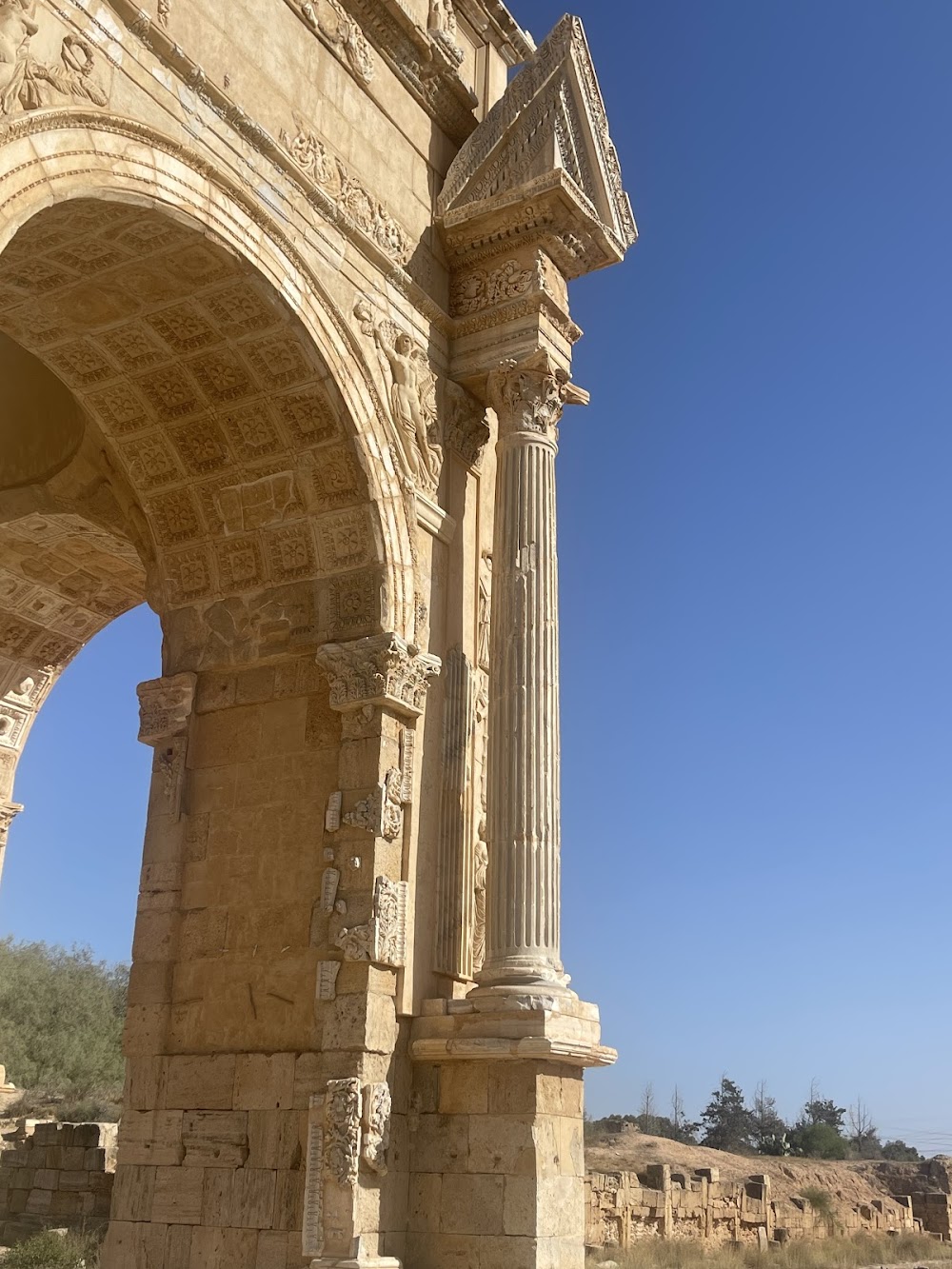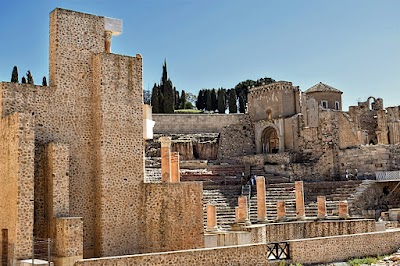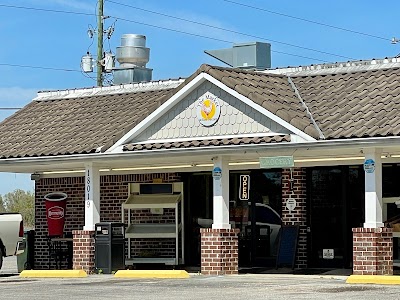Marketplace of Leptis Magna (سوق لبدة)
Overview
Leptis Magna, nestled in Murqub, Libya, is celebrated as one of the most intricately detailed and well-preserved ancient cities of the Roman Empire. Among its many stunning features, the **Marketplace of Leptis Magna** stands out as a remarkable example of ancient architecture and urban planning, reflecting the grandeur of Roman civic life.
The origins of Leptis Magna can be traced back to the **7th century BC**, when it was founded by Phoenician settlers from Tyre. However, it was during the 1st century BC, as the Roman Empire began to assert its influence, that Leptis Magna transformed into a thriving and sophisticated city. The Marketplace, or **Forum**, epitomizes this Roman investment and architectural achievement, showcasing the ambitions of the time.
Positioned conveniently near the harbor, the Marketplace served as a lively hub for trade and social engagement. Its construction was initiated under **Emperor Septimius Severus**, a native of Leptis Magna, who was deeply invested in the development of his birthplace. Between **192 AD and 211 AD**, this period witnessed significant enhancements and expansions funded by Severus and his successors, marking a golden age for the city.
The design of the Marketplace exemplifies the ingenuity of Roman engineering and urban planning. At its center lies a spacious, open forum, encircled by colonnaded buildings that provided shaded walkways for merchants to display their wares and conduct business. This symmetrical and organized layout underscores the Roman commitment to order, functionality, and aesthetic appeal.
Flanking the Marketplace was the **Basilica**, a grand rectangular structure designated for administrative and legal functions. The Basilica's magnificent halls, lined with columns and embellished with intricate mosaics and marble statues, offered a stunning backdrop for civic affairs. On the opposite side, the **Macellum**, or market hall, bustled with activity as vendors sold fresh produce, meat, and fish daily. This space featured numerous stalls and fountains, ensuring the cleanliness and freshness of perishable goods.
Dominating the skyline within the forum is a magnificent **triumphal arch** dedicated to Emperor Septimius Severus. Constructed from locally sourced limestone, the arch boasts detailed carvings and inscriptions that celebrate Severus's military accomplishments and his contributions to the city's development. More than just a decorative structure, this arch symbolizes imperial power and prosperity.
The corners of the Marketplace were home to smaller temples and shrines dedicated to various Roman gods and deities, allowing locals to seek blessings for successful trade and personal well-being. These religious structures illustrate the seamless blending of daily life and spirituality within Roman culture.
A key feature of the Marketplace's construction was its sophisticated **water management system**. Roman engineers devised elaborate aqueducts to transport fresh water from distant sources into the city. This vital resource was then distributed through underground pipes to public fountains and bathhouses, ensuring a consistent supply of clean water for both commercial and personal use. Additionally, advanced drainage systems maintained a dry and sanitary environment, essential for this bustling commercial center.
As time passed, the Marketplace of Leptis Magna adapted to the evolving trade patterns and needs of its inhabitants. However, its decline began in the **4th century AD**, due to internal conflicts and the eventual fall of the Western Roman Empire. Compounded by desert encroachment and invasions, the once-vibrant Marketplace fell into disrepair and was gradually abandoned.
Despite centuries of neglect, significant portions of the Marketplace have survived, allowing modern archaeologists and visitors to admire its grandeur. Ongoing excavations and restoration efforts have uncovered much of its original layout, offering a fascinating glimpse into the daily life and architectural mastery of ancient Rome.
Today, the **Marketplace of Leptis Magna** is recognized as a **UNESCO World Heritage site**, celebrated for its historical significance and its role as a link between the past and the present. It continues to draw scholars, history enthusiasts, and tourists eager to experience the magnificence of one of Rome’s most ambitious urban projects beyond Italy's borders.


